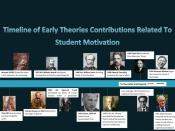1.0IntroductionJob design is broadly defined as level and breadth of job content, over-time variability in task assignment, specific mix of assigned tasks, use of teams, and the level of autonomy granted to individual workers or teams (Baron and David, 2000: p 334).
Today's business environment, correct job design can help a company to become successful and competitive in the market. The job design is more emphasized and focuses. Since jobs have to be designed using processes that model new types of job design. These theories are that design processes and the resulting job designs must recognize that nature of knowledge work is different from administrative and operational work and that the people who perform it resist structured approaches and need other things in their work.
This assignment is aimed to a variety of issues related to job design; it will be discussing the philosophy that resulted in their initial development and some broad principles that suggest a shift away from a constricted set of job responsibilities to a more broadened approach to the division of work.
In this assignment, I will describe the theories of Herzberg's Two-Factors Model and the Job Characteristics Model of Hackman and Oldham and knowledge work. Second, I will to identify the reasons why General Electric is so successful, while the Bank of XingYe is not that successful in the real world. Finally is the conclusion of my finds.
2.0 The theories of Job Design2.1 Theories of Herzberg applied in job designIn Hertzberg's Two-factor Model, which is also known as Motivation-Hygiene Model, Herzberg proposes a list of factors that lead to satisfaction (Motivators) and an additional list of factors that lead to dissatisfaction (Hygiene factors). The motivators are typically related to intrinsic factors such as recognition, achievement, responsibility, and the content of work itself.


